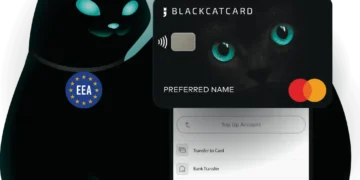People can use short code lookup tools to find out whether a text message originated from a reliable source or a problematic sender. This helps you communicate more safely and protects them from fraud and unwanted material. Accurately identifying the source builds trust, protects personal information, and supports responsible mobile usage by clarifying who sent the message. Paying close attention to source information, registration data, and carrier identification makes it easy to make better decisions and keep your messages secure every day.
How to Understand Short Codes
Businesses and organizations utilize short codes, which are unique, shorter phone numbers, to send and receive a lot of text messages with dependable delivery and known routing characteristics. Carrier regulations govern short codes through content standards, permission policies, and technical rules that maintain throughput and reduce unexpected filtering or delivery issues. Proper oversight of short codes keeps communication flows clean and minimizes unwanted traffic that could confuse or overwhelm recipients. A short code lookup provides structured information about the number’s owner, program name, service type, and intended usage, helping users verify message legitimacy. This makes it easy to tell the difference between allowed communication programs and suspect behavior.
Basics of Registration and Compliance
Registered short codes go through an approval process that checks the application data, brand identification, content description, opt-in technique, opt-out handling, and complaint management methods. This helps keep communication responsible. To make sure that traffic meets consumer protection standards, legal consent principles, and clear disclosure of message frequency or data consumption notes, carriers and aggregators look at these criteria. Structured compliance measures make it less probable that applications that aren’t allowed or aren’t clearly documented would get an active routing status. A short code lookup shows whether the number appears in official records and displays its current status—active, pending, suspended, or decommissioned—based on rule compliance.
What a Lookup Returns
A standard lookup result displays the short code, application or brand name, service category (such as alerts or authentication), and typical command keywords like STOP or HELP. A brief service description, details on carrier coverage, and support contact information may all be included in the supplemental sections. These make up a short profile that sets the limits for the message content. Clear labeling of the main aim makes it less likely that people will be confused about why the communication came. Reliable lookup sources keep their databases up to date on a regular basis. This includes changes in the program’s lifecycle, such as reassignments or terminations that modify how incoming traffic from a previously inactive code is interpreted. Keeping entries up to date on time prevents old records from leading people to make wrong conclusions about the validity of messages.
Checking the Legitimacy Signals
A trustworthy operational pattern under set rules is shown by consistent alignment between the substance of the message, the declared program description, and the recognized opt-out directives. Having the right HELP and STOP keyword support shows that you follow normal consumer control standards and makes people more confident in respecting data practices. Predictable regularity and subject relevance within the indicated program scope further reinforce good conduct norms. Suppose the lookup data doesn’t match the message claims or indicates missing registration details. In that case, it’s a hint to be careful and take further measures to verify before clicking on links or submitting important information. Spelling mistakes in brand names, incorrect service labels, or missing control keywords make the information less reliable and show that it might be misused. Comparing each observable element to the official record in a systematic way helps with disciplined validation and lowers the risk of being tricked by fraud.
Safe habits that last
Frequently using lookup tools for unfamiliar short codes builds strong safety habits that reduce communication risks over time. Checking regularly helps you remember how to write appropriately, use keywords properly, and use popular descriptive phrases in approved applications. Knowing these guidelines helps identify issues. Monitoring known codes in contacts or records helps with quick recognition later, but it’s important to stay alert for format or content changes that could indicate misuse. Keeping an eye on official directories makes sure that people know about new assignments or retired numbers, which keeps the information accurate over time. Structured discipline surrounding verification helps keep communication systems clean and makes everyone more resilient against new ways of tricking people.
Conclusion
Short code lookup makes messages safer by connecting incoming traffic to validated registration records, explicit ownership, and standard control directives that keep communication open. Regularly checking source data, compliance indicators, and content alignment builds trust and lowers the risk of unwanted exposure. Steady adoption of systematic checking habits encourages dependable mobile engagement and creates an environment where trustworthy communications flow work smoothly under responsible management.













